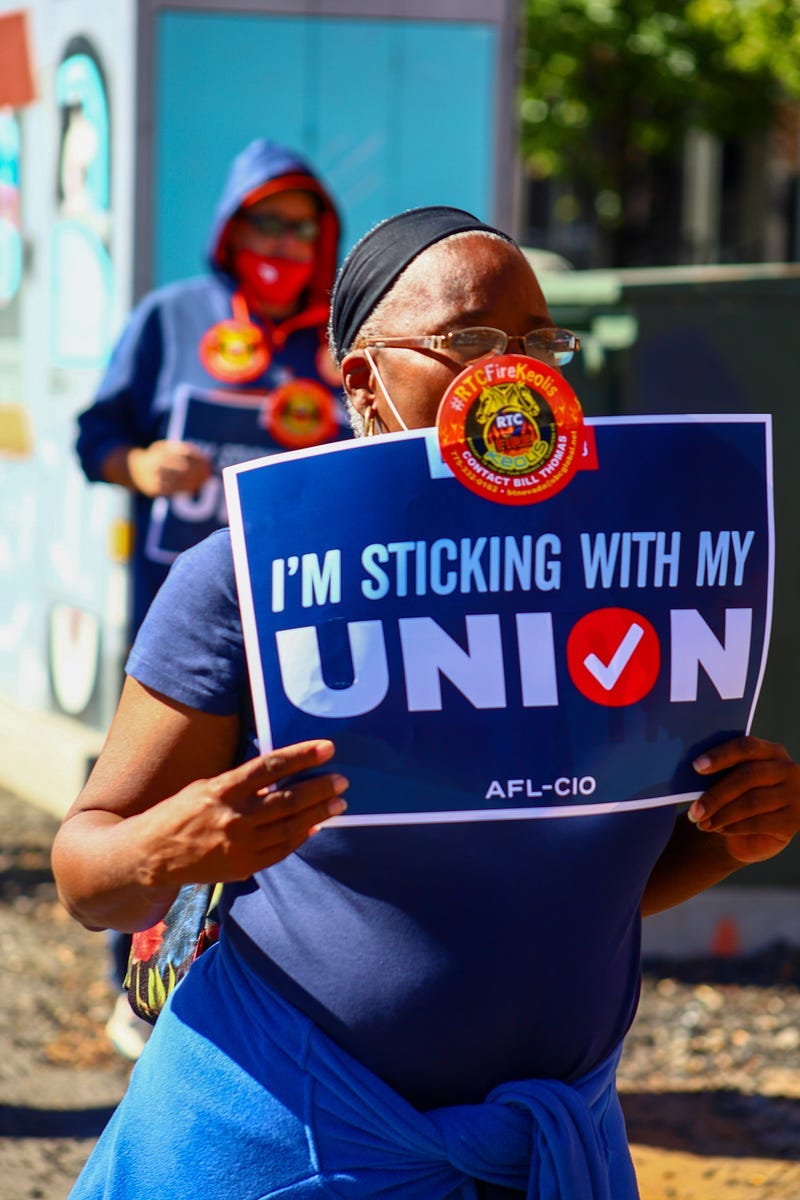Another Labor Day to Celebrate an Historic Year of Union Progress - And the Fight Ahead
The direction we take could plunge us deeper into neo-liberalism's feudal tax cuts for the economic royalists, or into an age where workers benefit from democracy in the workplace.

Another Labor Day is upon us.
Normally this a day we use to commemorate the end of summer when kids return to school, the weather gets cooler (or at least is supposed to), and we start preparing for the holidays and end of the year. Retail loves to use it to push more sales.
But let’s not ignore the fact that Labor Day came about after years of relentless pressure from labor unions and activist groups in an attempt to amplify the contributions unions have made to the United States.
https://twitter.com/UNUMKenBurns/status/1698697835418460496
Unions made America.
They created the American middle class.
https://twitter.com/POTUS/status/1698694028034736142
This year we celebrate a unionization renaissance as more companies have won the right to collectively bargain and lawmakers have thrown their support behind them.
Last September, Sen. Elizabeth Warren re-introduced a bill from 2017 and 2020, the “Nationwide Right to Unionize Act,” that would repeal Section 14(b) of the National Labor Relations Act, and make illegal right-to-work-for-less laws that prohibit unions from collecting dues from non-union members covered under union contracts.
Amazon made history when Staten Island, NY Amazon employees voted to create the first unionized warehouse.
Microsoft entered into a neutrality agreement with the Communications Workers of America (CWA), stating if it purchases Activision, it will not interfere with Activision Blizzard workers’ union rights.
Medieval Times workers have voted to form a union.
After striking following an imposed 30% fee, internet retail marketplace Etsy is considering forming a union as well.
Workers at Apple, Chipotle, Trader Joe’s, Google, REI and Verizon have all won union elections.
The Guardian reported last fall about the increase in worker walkouts amid this unionization spike in what some deemed “Stroke-tober.”
Last month Teamsters ratified a five-year deal with UPS, ending a threat of a strike.
352 Starbucks stores have successfully unionized.
The United Auto Workers (UAW) are on the verge striking over their union contract.
And if you’ve tried to watch your favorite TV show lately, you’re probably aware of the months-long SAG-AFSTRA strike that persisted through the summer.
Last week, the National Labor Relations Board (NLRB) won a decisive victory when it ruled it will make unionization efforts easier at companies that violate law resisting organizing efforts.
The NLRB stated in a press release:
The new standard will promote a fair election environment by more effectively disincentivizing employers from committing unfair labor practices.
Harvard Law School professor of practice and executive director of the Center for Labor and a Just Economy, Sharon Block, explained:
It addresses the two biggest problems with union elections right now — that they take too long and that employers actually have incentive to violate the law during the campaign.
This is an important decision in trying to make what I would believe is sort of a flawed law work as well as possible. Addressing twin problems of the way and the incentive to unlawfully union-bust is incredibly meaningful. I think unions will be able to devote more resources to getting to elections quickly.
One of the most high-profile union busters is Starbucks.
Starbucks Workers United tweeted:
ATTN WORKERS, now is the time to organize! Why? The NLRB just issued a new rule that will guarantee a fairer unionization process. If Starbucks is found to commit a ULP after a majority of workers voice their support for a union, Starbucks will HAVE to bargain with those workers!
One crucial piece of federal legislation, the “Protecting the Right to Organize” (PRO) Act, seeks to grow and strengthen union membership by:
“Introducing meaningful, enforceable penalties for companies and executives that violate workers’ rights;
“Expanding workers’ collective bargaining rights and closing loopholes that corporations use to exploit workers;
“Strengthening workers’ access to fair union elections and requiring corporations to respect the results.”
Last January, the Bureau of Labor Statistics reported union membership in the United States in 2021 to be at 10.3 percent while the number of unionized workers continued its decline to 14 million.
To put that into perspective, in 1983, the first year for which comparable union data are available, the unionization rate was 20.1 percent with 17.7 million union workers.
One of the intentional casualties of 40 years of neo-liberal Reaganomics is the precipitous drop in public-sector unions.
America has arrived at a crossroads, though, and the direction we take could plunge us deeper into neo-liberalism’s feudal tax cuts for the economic royalists, or again into an age where the wealthy pay their share of taxes and average workers producing the largess off which the wealthy profit will benefit from higher wages, better living standards, and democratic workplaces.



